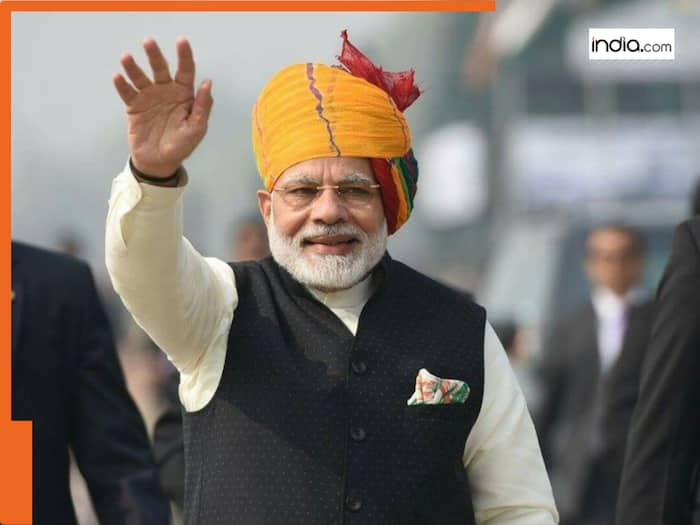In 2010, after a maritime dispute, China restricted rare earth exports to Japan, causing a 39% drop in Japan’s imports and triggering sharp price increases globally.

Defence Minister Rajnath Singh’s recent announcement at the inauguration of the Titanium and Superalloy Materials Plant in Lucknow on October 18 marks a turning point in India’s journey towards technological self-reliance. His emphasis on domestic production of rare materials for defence and aerospace is not just about manufacturing capability—it represents a fundamental shift in how India views its strategic independence in an increasingly uncertain global landscape. The Minister’s vision of moving from “Make in India” to “Design, Develop, and Deliver in India” captures the essence of this transformation, signaling that India is ready to take control of its technological destiny.
The timing of this push could not be more critical. Rare earth elements, that group of 17 special materials in the periodic table, have become the new oil of the 21st century. These elements are essential for everything from fighter jets and missiles to smartphones and electric vehicles. Their unique properties—like the extraordinary strength of rare earth magnets compared to ordinary ones—make them irreplaceable in modern technology. Yet unlike oil, which has multiple suppliers across the globe, rare earth elements face a massive concentration problem. One country dominates this crucial supply chain to an alarming degree, creating vulnerabilities that nations like India can no longer afford to ignore.
China’s stranglehold on the rare earth market is staggering. With 38% of global reserves and producing two-thirds of the world’s supply in 2023, China controls 240 out of 356 kilotons of global production. More importantly, it accounts for 64% of export value and a massive 86% of total quantity exported worldwide. For India, this dependence is even more acute—China supplies 81% of the value and 90% of the quantity of rare earth elements that India imports. This level of reliance on a single source for materials critical to defence, space exploration, and clean energy transition poses serious strategic risks.
History has already shown us what can happen when supply chains are weaponized. In 2010, after a maritime dispute, China restricted rare earth exports to Japan, causing a 39% drop in Japan’s imports and triggering sharp price increases globally. This incident was a wake-up call for developed nations about the dangers of depending on a single supplier for critical materials. Japan, the United States, and the European Union had to approach the World Trade Organization to resolve the issue. While they won that case, the episode demonstrated that legal victories do not eliminate the fundamental vulnerability of concentrated supply chains.
For India, the stakes are even higher. As the country accelerates its green energy transition and expands its defence manufacturing under the Atmanirbhar Bharat initiative, the demand for rare earth elements will only grow. The International Energy Agency projects that global demand for these materials could nearly double by 2050, from 93 kilotons to 180-202 kilotons, with clean energy technologies accounting for up to 39% of usage. India cannot achieve its climate goals or maintain its defence readiness while remaining dependent on imports for these critical inputs.
This is where the new Titanium and Superalloy Materials Plant and similar initiatives become game-changers. By developing domestic capability to refine and process rare earth elements, India joins an elite group of nations that control their own supply chains. The ability to manufacture components for fighter jets, missiles, naval systems, and satellites domestically means that India’s strategic programs will no longer be vulnerable to external supply disruptions or geopolitical pressures. Defence Minister Singh rightly pointed out that true strength comes from producing our own materials, components, chips, and alloys—this is the foundation of genuine strategic autonomy.
The government’s multi-pronged approach to addressing this challenge shows strategic thinking. Indian Rare Earths Limited, established way back in 1950, has received fresh attention and support. The recent removal of IREL from the US export control list opens new opportunities for technology access and collaboration. The new Rare Earth Permanent Magnet Plant in Visakhapatnam, producing samarium-cobalt magnets using indigenous technology, may start small with 3,000 kg annual capacity, but it represents the critical first step towards domestic production. The Ministry of Mines’ planned Production Linked Incentive scheme for recycling critical minerals addresses another dimension of supply security.
Perhaps most importantly, India is diversifying its import sources while building domestic capacity. The partnership with Kazakhstan through the India-Central Asia Rare Earths Forum presents a promising alternative. Kazakhstan possesses 15 out of 17 rare earth elements and has established extraction facilities. As India’s largest trading partner in Central Asia, with existing defence and nuclear cooperation, Kazakhstan offers both geographical proximity and political reliability. Working with Kazakhstan and other Central Asian partners can help create a regional rare earth ecosystem that reduces dependence on any single supplier.
The broader implications of this strategy extend beyond just materials. When India develops its own rare earth processing capabilities, it creates high-skilled jobs, builds advanced research institutions, and develops expertise in complex chemical processes. States like Uttar Pradesh, where the new titanium plant has been established, can become industrial powerhouses. As Defence Minister Singh noted, improved governance and law and order under Chief Minister Yogi Adityanath’s leadership has already attracted investors and created jobs. Strategic materials production can amplify this trend, transforming regions into advanced manufacturing hubs.
However, challenges remain. Rare earth processing is technically difficult, environmentally sensitive, and capital intensive. Building domestic capacity requires sustained investment in research and development, environmental management systems, and skilled workforce training. International partnerships for technology transfer will be crucial, as will be regulatory frameworks that balance industrial development with environmental protection. The road to self-reliance is long, but India has no choice but to walk it.
The inauguration of the Titanium and Superalloy Materials Plant in Lucknow is more than a ribbon-cutting ceremony—it symbolizes India’s determination to control its technological future. In an era where critical minerals define power relationships between nations, India’s push for self-reliance in rare earth materials is not just about economics or industry. It is about ensuring that India can defend itself, pursue its space ambitions, and transition to clean energy without asking anyone’s permission. That is what true strategic independence looks like, and that is the future Defence Minister Rajnath Singh has outlined for India.
Also Read:
Disclaimer : This story is auto aggregated by a computer programme and has not been created or edited by DOWNTHENEWS. Publisher: india.com







